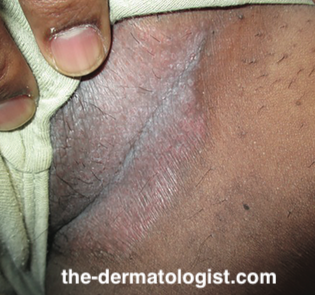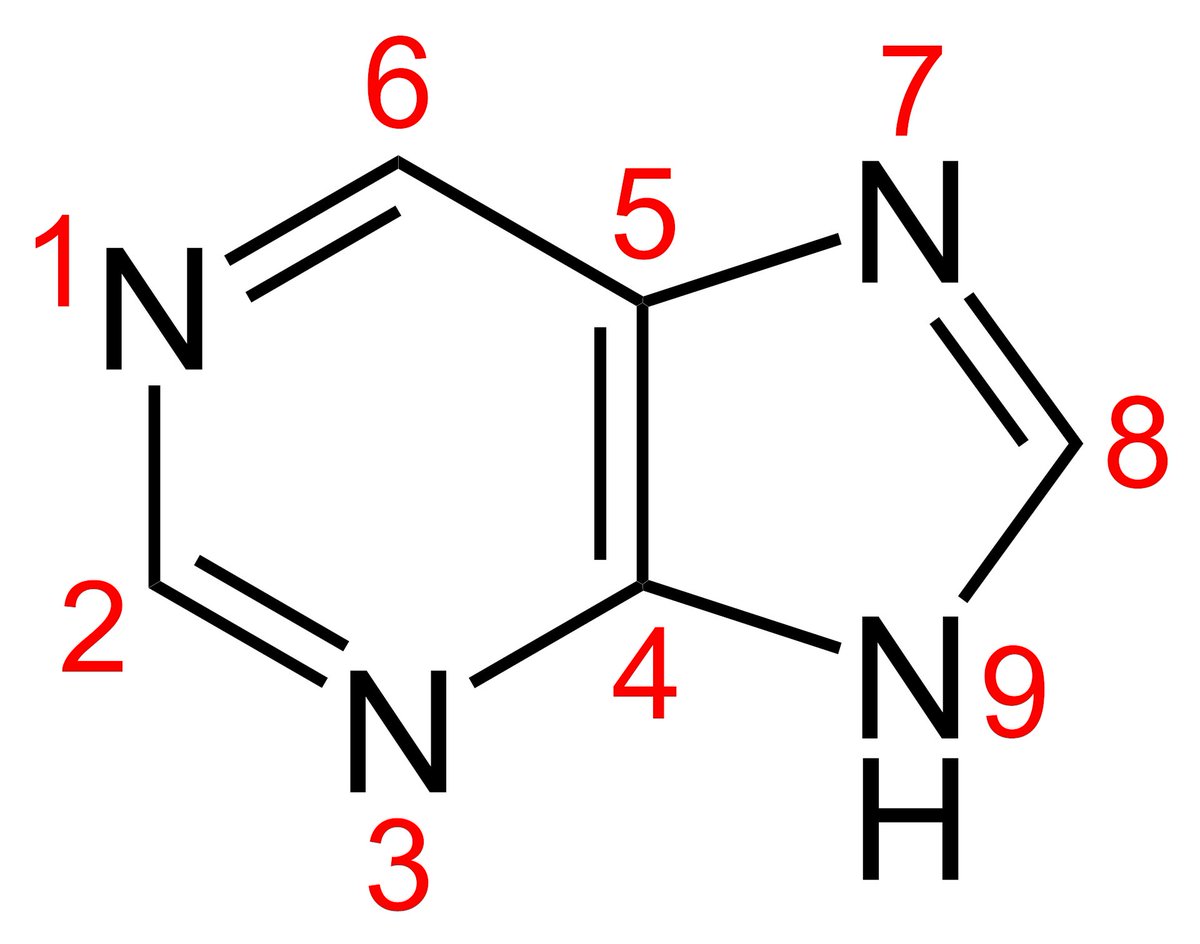1/
Time for another #morphology #Derm101 series #tweetorial on the skin exam. Today, we'll cover:
DISTRIBUTION
How the location a rash occupies on the body might help us with the differential diagnosis!
#FOAMEd #MedEd #medtwitter #dermtwitter #medstudenttwitter #dermatology
Time for another #morphology #Derm101 series #tweetorial on the skin exam. Today, we'll cover:
DISTRIBUTION
How the location a rash occupies on the body might help us with the differential diagnosis!
#FOAMEd #MedEd #medtwitter #dermtwitter #medstudenttwitter #dermatology

2/
An important point to start:
Distribution is LEAST important in the skin exam. Primary & secondary lesions, configuration & scale are all better in informing our DDx.
I tell my learners that if confused about a rash, pretend it's elsewhere on the body & see if that helps.
An important point to start:
Distribution is LEAST important in the skin exam. Primary & secondary lesions, configuration & scale are all better in informing our DDx.
I tell my learners that if confused about a rash, pretend it's elsewhere on the body & see if that helps.
3/
Also - throughout this #tweetorial, I will try to display skin disease in lighter & darker skinned patients side by side. Remember in darker skin, erythema is harder to see, so I hope this highlights the point!
A question: In tweet 1, what distribution is shown in the photo:
Also - throughout this #tweetorial, I will try to display skin disease in lighter & darker skinned patients side by side. Remember in darker skin, erythema is harder to see, so I hope this highlights the point!
A question: In tweet 1, what distribution is shown in the photo:
4/
Answer: PHOTODISTRIBUTED!
The photos in tweet 1 are of polymorphous light eruption (PMLE), which is a reaction the skin can have to UV. With repeated exposure, things improve, so patients improve over the summer.
A sunburn 👇 is the best example of a photodistributed rash.
Answer: PHOTODISTRIBUTED!
The photos in tweet 1 are of polymorphous light eruption (PMLE), which is a reaction the skin can have to UV. With repeated exposure, things improve, so patients improve over the summer.
A sunburn 👇 is the best example of a photodistributed rash.

5/
Sometimes it's not so simple. In these pictures, we are seeing an effect from an ingested drug causing a phototoxic reaction (when it happens in the nails as we see in pic 2, it's called photoonycholysis).
Doxycycline is a common culprit for this. A good history is critical!

Sometimes it's not so simple. In these pictures, we are seeing an effect from an ingested drug causing a phototoxic reaction (when it happens in the nails as we see in pic 2, it's called photoonycholysis).
Doxycycline is a common culprit for this. A good history is critical!


6/ The next we'll cover is the "opposite" to photodistributed: BATHING SUIT DISTRIBUTION (basically where the sun don't shine)!
The best example of this is mycosis fungoides, the most common type of cutaneous t-cell lymphoma.
An old #tweetorial on MF:

The best example of this is mycosis fungoides, the most common type of cutaneous t-cell lymphoma.
An old #tweetorial on MF:
https://twitter.com/DrStevenTChen/status/1147926420468846592?s=20

7/
Next, let's talk EXTENSORS AND FLEXURES!
In med school we all learn that ~
rash on the extensors = psoriasis (pic 1)
rash on the flexures = atopic dermatitis (pic 2)
If it helps, check out my #tweetorials:


Next, let's talk EXTENSORS AND FLEXURES!
In med school we all learn that ~
rash on the extensors = psoriasis (pic 1)
rash on the flexures = atopic dermatitis (pic 2)
If it helps, check out my #tweetorials:
https://twitter.com/DrStevenTChen/status/1110715703684984833?s=20
https://twitter.com/DrStevenTChen/status/1229398061845106688?s=20


8/
But realize that in kids, especially babies, we tend to see eczema all over. I was taught it had to do with the lack of scratching, but to be fair, really bad eczema in adults is also all over the place. I think adults are just worse at controlling scratching in milder cases.

But realize that in kids, especially babies, we tend to see eczema all over. I was taught it had to do with the lack of scratching, but to be fair, really bad eczema in adults is also all over the place. I think adults are just worse at controlling scratching in milder cases.


9/
Next up - ACRAL DISTRIBUTION!
First, an ah-ha moment I had in residency to share: The word "acral" doesn't mean palms and soles. It actually means distal extremities, so the whole hand, whole foot, and even the ears are involved!
And NOT everything is syphilis, RMSF, or EM!
Next up - ACRAL DISTRIBUTION!
First, an ah-ha moment I had in residency to share: The word "acral" doesn't mean palms and soles. It actually means distal extremities, so the whole hand, whole foot, and even the ears are involved!
And NOT everything is syphilis, RMSF, or EM!

10/
While syphilis, RMSF, & erythema multiforme are great things to suspect, there are other things to consider, which I discuss in this tweetorial:
Below is a good example of GVHD that starts acrally and moves in.
Check out👉
While syphilis, RMSF, & erythema multiforme are great things to suspect, there are other things to consider, which I discuss in this tweetorial:
https://twitter.com/DrStevenTChen/status/1180935098822201344?s=20
Below is a good example of GVHD that starts acrally and moves in.
Check out👉
https://twitter.com/DrStevenTChen/status/1185623708301348865?s=20

11/
Okay, next up, SEBORRHEIC. This one is unusual, but usually I think scalp, T-zone, by the nasal ala, periumbilical, under the breast, and in the groin (pic 1).
As you might expect, seborrheic dermatitis is a great example of something in this distribution (pic 2).

Okay, next up, SEBORRHEIC. This one is unusual, but usually I think scalp, T-zone, by the nasal ala, periumbilical, under the breast, and in the groin (pic 1).
As you might expect, seborrheic dermatitis is a great example of something in this distribution (pic 2).


12/
Another eruption in the seborrheic distribution is quite rare. Darier disease is a genetic mutation in ATP2A2 (a calcium channel) which causes blistering in the skin in the seborrheic distribution (pic)! This is one of the rare genetic blistering diseases we see!
Another eruption in the seborrheic distribution is quite rare. Darier disease is a genetic mutation in ATP2A2 (a calcium channel) which causes blistering in the skin in the seborrheic distribution (pic)! This is one of the rare genetic blistering diseases we see!

13/
Interestingly, a related genetic blistering disorder called Hailey Hailey (pic) will bring us to the next distribution: INTERTRIGINOUS! You see the macerated plaques that are often malodorous, starting in the skin folds!
Interestingly, a related genetic blistering disorder called Hailey Hailey (pic) will bring us to the next distribution: INTERTRIGINOUS! You see the macerated plaques that are often malodorous, starting in the skin folds!

14/
Otherwise, the most common thing in the skin fold would be intertrigo (pic1). Another pearl from residency: intertrigo is irritation from skin rubbing. It's not candida unless you see satellite pustules!
Note that some rashes can also be intertriginous, even psoriasis (pic2)

Otherwise, the most common thing in the skin fold would be intertrigo (pic1). Another pearl from residency: intertrigo is irritation from skin rubbing. It's not candida unless you see satellite pustules!
Note that some rashes can also be intertriginous, even psoriasis (pic2)


15/
Another intertriginous "rash" would be these sinus tracts and cysts, seen in hidradenitis suppurativa. This rash tends to occur with dissecting cellulitis, acne conglobata, and pilonidal cysts. Together, this is called the follicular occlusion tetrad (which is a misnomer...).
Another intertriginous "rash" would be these sinus tracts and cysts, seen in hidradenitis suppurativa. This rash tends to occur with dissecting cellulitis, acne conglobata, and pilonidal cysts. Together, this is called the follicular occlusion tetrad (which is a misnomer...).

16/
Last one - CONTACT DERMATITIS DISTRIBUTIONS
Notice how in pic1, we see an axilla, but sparing of the innermost vault? This is good for a contact derm to clothing.
Whereas pic2 in a patient who is frequently washing their hands (aren't we all) might be contact derm to soaps.

Last one - CONTACT DERMATITIS DISTRIBUTIONS
Notice how in pic1, we see an axilla, but sparing of the innermost vault? This is good for a contact derm to clothing.
Whereas pic2 in a patient who is frequently washing their hands (aren't we all) might be contact derm to soaps.


17/
RECAP:
✅ In the world of morphology, distribution helps, but the other categories are more important.
✅ Certain distributions might warrant a good history (eg: contact derm or new meds)
✅ Acral is the whole hand & foot, & ears!
✅ I've made too many #tweetorials😳
RECAP:
✅ In the world of morphology, distribution helps, but the other categories are more important.
✅ Certain distributions might warrant a good history (eg: contact derm or new meds)
✅ Acral is the whole hand & foot, & ears!
✅ I've made too many #tweetorials😳
18/
This wasn't an exhaustive list, but I just wanted to run through how distribution can be helpful with some common examples!
For you video-based learners, check out the video version I made of this #tweetorial!
Hope this was helpful!
This wasn't an exhaustive list, but I just wanted to run through how distribution can be helpful with some common examples!
For you video-based learners, check out the video version I made of this #tweetorial!
Hope this was helpful!
• • •
Missing some Tweet in this thread? You can try to
force a refresh





















